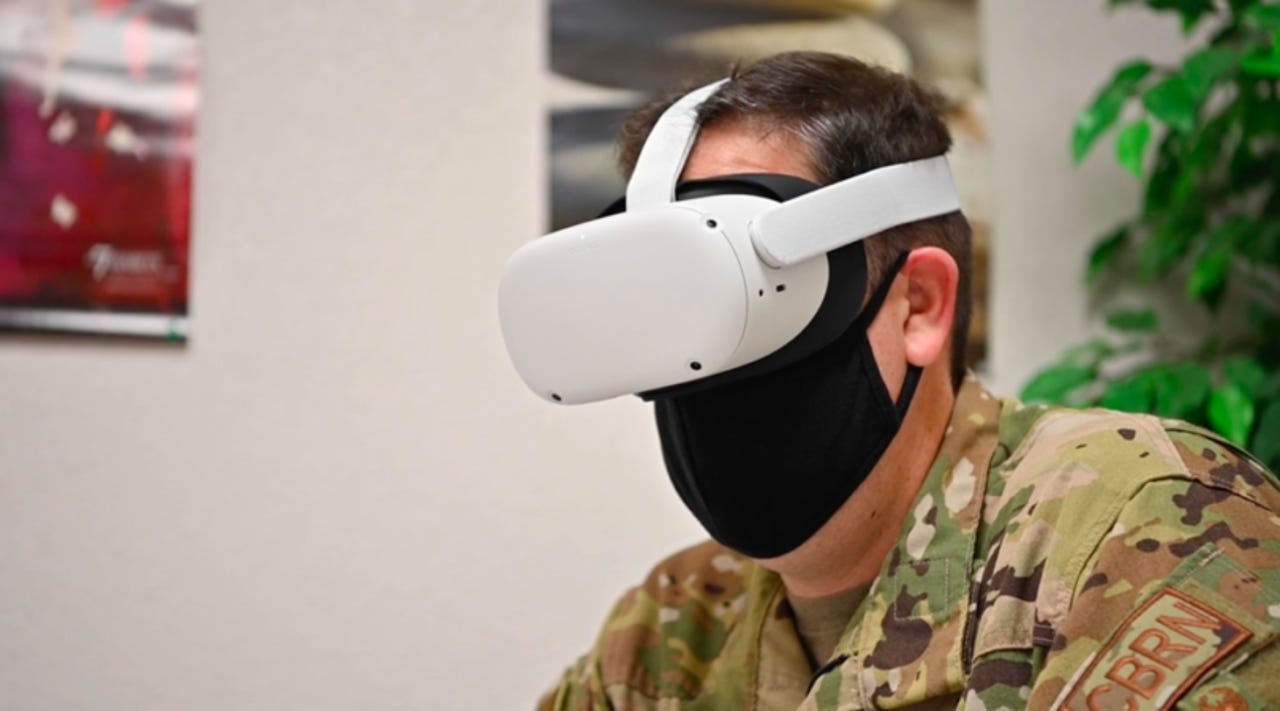Virtual reality to prevent military suicide


Virtual reality is being used in a variety of training applications, from getting Walmart employees prepared for a holiday rush to teaching doctors how to deal with patients. But can it be used to help people identify and respond to emotional distress in others, potentially averting suiciding?
That's the ambition of a DoD suicide prevention test at Travis Air Force Base, where the 60th Air Mobility Wing recently took part in a suicide prevention virtual reality training test phase.
According to Travis public affairs, participants in the training put on a virtual reality headset and interact with a virtual person who is in obvious emotional distress. The training is designed to encourage participants to ask the right questions and prompt them to get help. If the participant misses opportunities or says the wrong thing, a training coach chimes in to assist.
Virtual reality and mixed reality training has been a major bright spot for a technology that's had a cooler-than-expected reception after years of hype. Virtual trainings can be run over and over without utilizing additional resources, can readily accommodate scenarios that would be impossible to stage in real life, and keeps trainees out of potentially hazardous conditions while learning on the job.
For an application like suicide prevention, virtual reality has the potential, if done well, to inject a degree of emotional verisimilitude into situations that would feel canned if enacted in a course or read from a book.
"Voice is the most fundamental way that we communicate, solve problems and build emotional connection," says Kevin Cornish, CEO and founder of Moth + Flame, the company that developed the VR training for Travis. "Voice activation opens the possibility of role-play in a simulated environment. The skills being practiced in this particular experience are conversational skills, therefore having the learner speak and be understood is at the center of the training experience. Having someone physically vocalize in these scenarios makes a much greater impact than someone coming up with an answer in their head and checking off a multiple choice response box on a piece of paper for example."
After winning a contract from Travis, Moth + Flame developed a suicide prevention module that would allow Airmen and their spouses to interact with fellow distressed Airmen in a virtual environment.
"Doing training in a simulated environment mimics a real world situation and allows a learner to gain confidence having difficult conversations that are not easy to replicate in real life," Cornish tells me via email. "Legacy training programs are often dominated by videos or powerpoint slides that don't allow the learner to practice conversational skills in a real-life type of setting. Individual role-play with professionals is expensive and isn't scalable for an entire air force base for example. That is why virtual reality provides the best of both worlds."
Of course, the stakes are high for a program meant to help identify emotional distress. Interestingly Moth+Flame leveraged its experience in entertainment to create a training that felt lifelike and engaging.
"Moth+Flame's background is in creating entertainment experiences for some of the biggest brands in the world including Netflix, Amazon, and Google," says Cornish. "Visual effects have always been at the center of what makes our use experience superior to other VR simulations. We use photo-realistic imagery in the experience so you feel like you are in the real world. We worked with the Air Force to develop the training script that would truly simulate this experience for an airman."
The Travis pilot is a test case that administrators hope will lead to wider implementation in the near future.